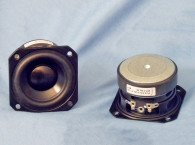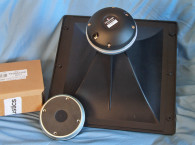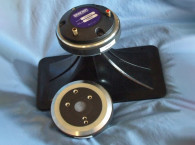• 1926—Peerless founded in Denmark
• 1933—Vifa founded in Denmark
• 2000—Peerless and Vifa merge to form Danish Sound Technology (DST)
• 2004—Tymphany founded
• 2005—Tymphany acquires Danish Sound Technology (DST)
• 2008—Tymphany opens state-of-the-art, custom-built manufacturing campus in XinXu, China
• 2009—Tom Jacoby and Ed Boyd acquire Tymphany
• 2014—Primax acquires 70% of Tymphany
• 2017—Tymphany acquires engineering and manufacturing operation in the Czech Republic from Bang & Olufsen.
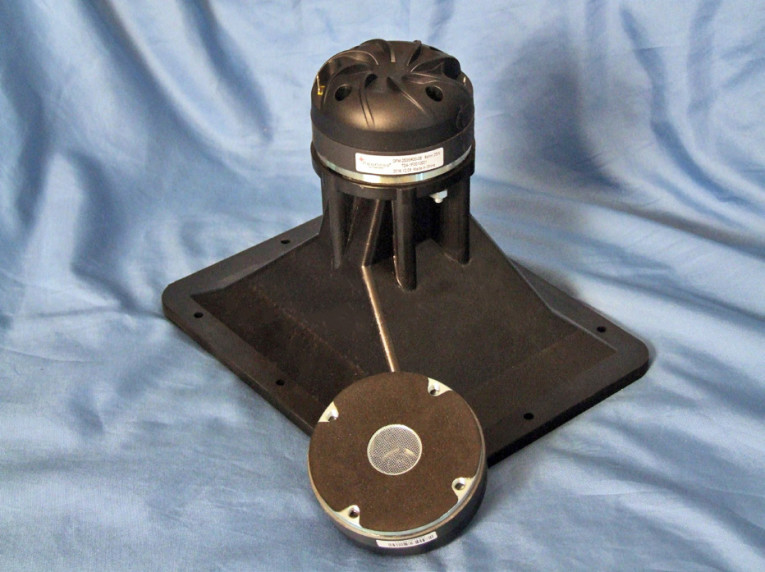
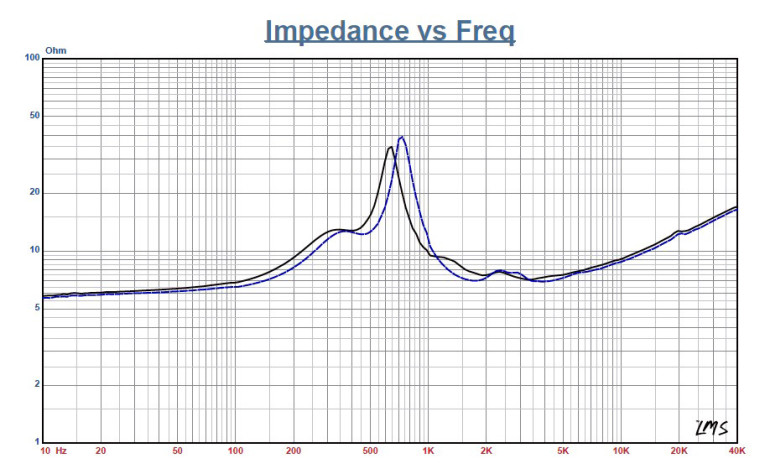
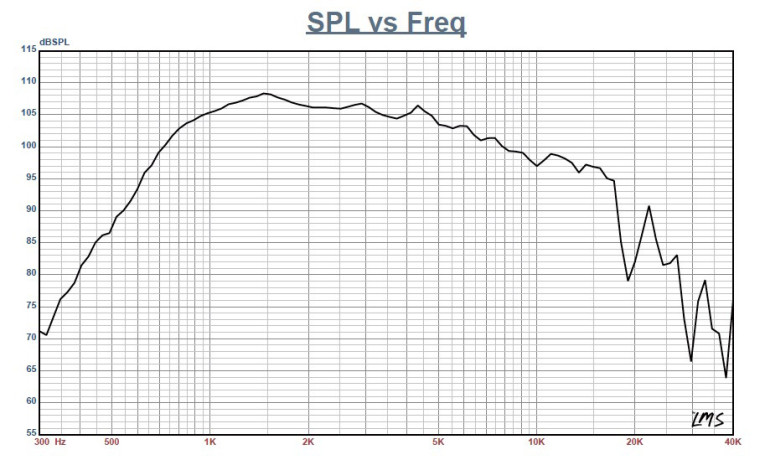
The DFM-2535R00-08 has a 1” throat exit diameter and a 1.4” titanium diaphragm with a polyimide surround (see Photo 1). This is driven by 35.5 mm diameter voice coil wound with round copper wire on an aluminum former (ASV). Other features include a ferrite ring magnet motor structure, nominal 25 W rated power handling (50 W continuous), an injection-molded black heatsink, and solderable terminals. I should also note that the titanium diaphragm is coated with a light, thin layer of unique damping material giving the driver, according to the company, an unusually smooth sound.
All of the materials resist environmental factors of heat, vibration, and aging and is purported to ensure many years of stable performance. Since Tymphany does not yet produce horns for compression drivers, I used the Eminence APT 150S 100° × 50° constant directivity horn for this explication. The recommended crossover frequency for the DFM-2535R00-08 is 1.5 kHz, same as the low cutoff for the APT 150S.
I began testing using the LinearX LMS analyzer to produce the 300-point stepped sine wave impedance plot shown in Figure 1. The solid black curve represents the DFM-2535R00-08 mounted on the APT 150S horn and the dashed blue curve represents the compression driver without the horn. With a 6.25 Ω DCR (Re), the minimum impedance of the DFM-2535R00-08/APT 150S was 7.1 Ω and at 3.3 kHz.
For the next set of SPL measurements, I free-air mounted the DFM-2535R00-08/APT 150S without an enclosure and measured both the horizontal and vertical on- and off-axis at 2.83 V/1 m using a 100-point gated sine wave sweep from 0° on-axis to 60° off-axis. Figure 2 displays the on-axis frequency response of the compression driver/horn combination, which is smooth with no major anomalies and a declining response as the frequency increases above 1.5 kHz, typical of constant directivity horns, and extending to 17.3 kHz.




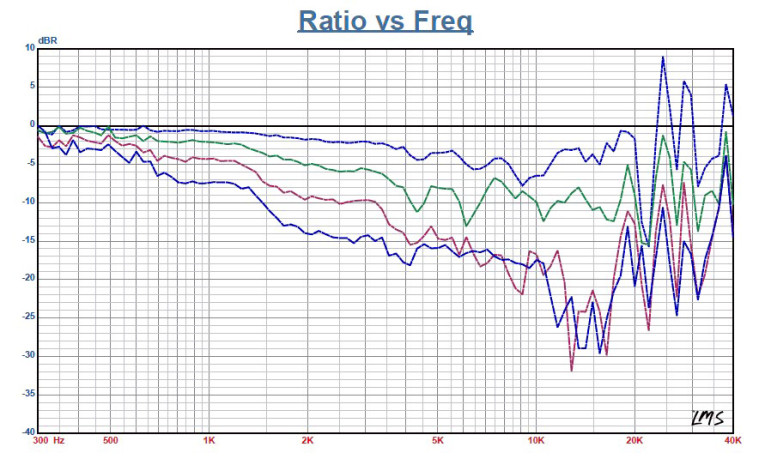

Figure 3 shows the on- and off-axis response in the horizontal plane. Figure 4 displays the normalized horizontal plane response, and the CLIO Pocket analyzer generated the 180° horizontal polar plot shown in Figure 5 (in 10° increments with 1/3 octave smoothing applied). Figure 6 gives the on and off-axis to 60° response in the vertical plane.
Figure 7 depicts the normalized vertical plane response, and the CLIO Pocket generated vertical plane polar plot shown in Figure 8 (in 10° increments with 1/3 octave smoothing applied). Figure 9 illustrates the two-sample SPL comparison showing the two DFM-2535R00-08/APT 150S compression driver samples to be very closely matched within less than 0.5 dB.
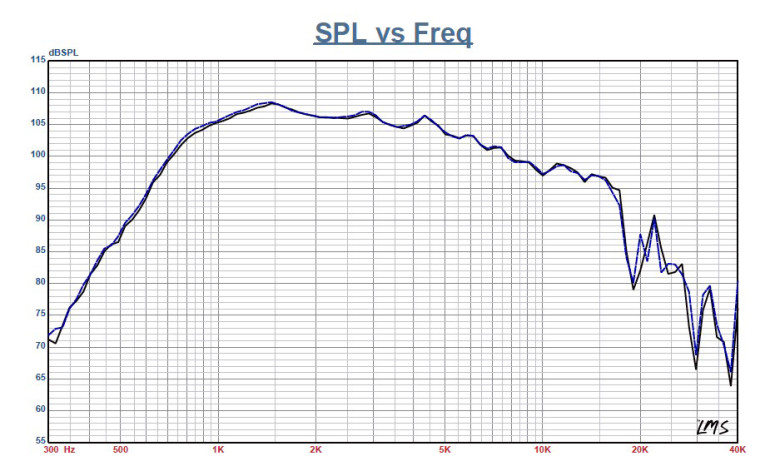
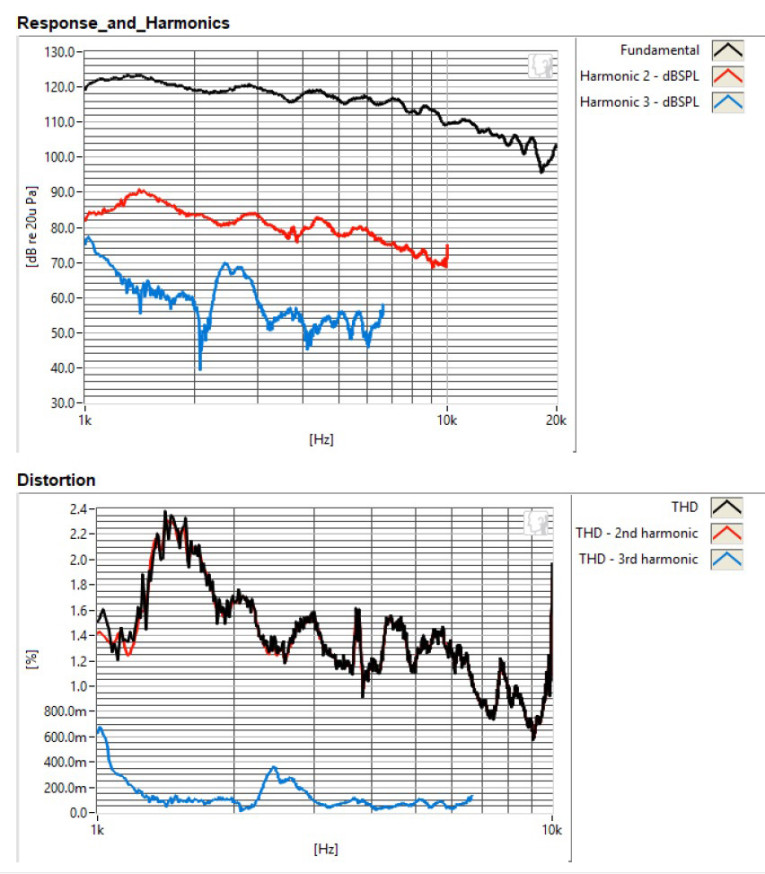
Next, I set up the Listen, Inc. AmpConnect ISC analyzer and 0.25” SCM microphone and SoundConnect power supply to measure distortion and generate time-frequency plots. For the distortion measurement, I again mounted the DFM-2535R00-08/APT 150S combination in free-air in the same manner as was used for the frequency response measurements, and set the SPL to 104 dB at 1 m (2.8 V determined by using a pink noise stimulus generator and internal SLM in the SoundCheck 15 software). Then, I measured the distortion with the Listen microphone placed 10 cm from the mouth of the horn. This produced the distortion curves shown in Figure 10.
For the next test sequence, I set up SoundCheck 15 to generate a 2.83 V/1 m impulse response curve for this driver/horn combination and imported the data into Listen’s SoundMap Time/Frequency software. Figure 11 shows the resulting cumulative spectral decay (CSD) waterfall. Figure 12 shows the Short Time Fourier Transform (STFT) plot.

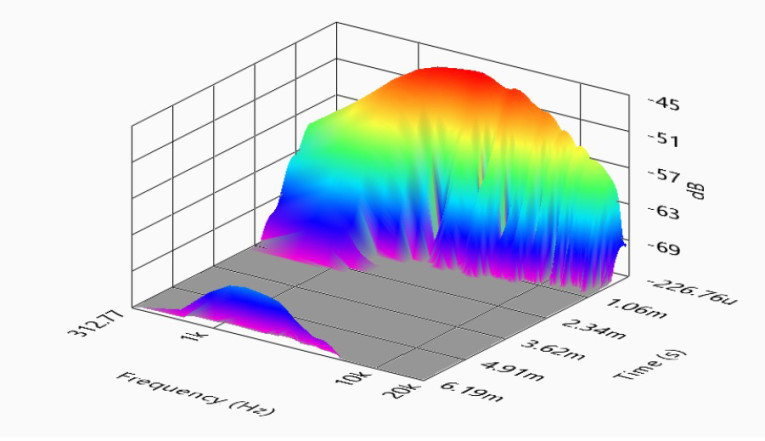
Tymphany is one of the larger OEMs in the business with a 770,000 ft2 of manufacturing space, 1.8 million drivers built per month, and 300 engineers, technicians, and program managers. The new DFM compression driver’s performance looks good and the build quality is likewise quite good. For more information about this driver and others, visit www.tymphany.com/pro. VC
This article was originally published in Voice Coil, August 2017.





